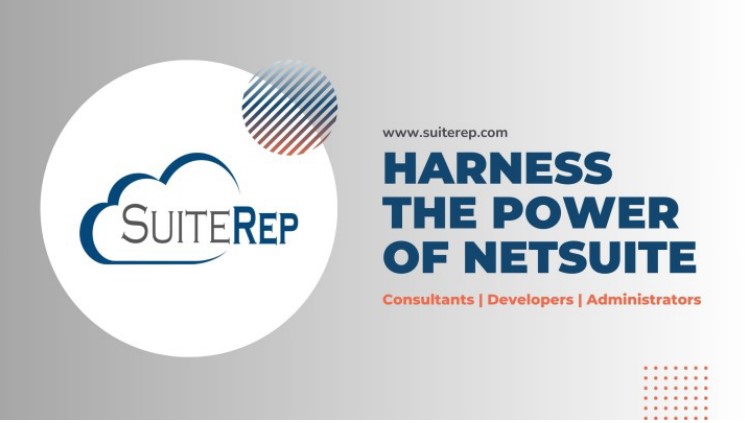A well-run firm needs clear steps when it adopts a new enterprise system. A solid plan cuts wasted effort and keeps teams on target. NetSuite offers finance, stock control, order management, and client data in one cloud suite. Yet a tool alone will not turn goals into gains. You need a sequence of moves that covers scope, data, set-up, test, launch, and support. Follow this roadmap to hit key dates and meet budget and quality aims.
Pre-Project Prep
A successful effort starts before any click or data load. You form a core team and set key aims. You secure buy-in from leaders and users. You gather high-level needs and set a plan that guides all work ahead.
Key tasks in this phase:
- Define project aim and success metric
- Assign sponsor, project lead, and team roles
- List current pain spots and future needs
- Set timeline, budget limit, and key date
- Choose change champion in each department
Set a simple governance plan that calls for regular check-ins. Build a single document with scope, goal, risk, and resource info. Keep it visible to all.
Discovery and Design
Once prep wraps you move to deep fact-find and map ideal flows. You review current work and note gaps. You draft new flows that NetSuite must support. You build a prototype of key screens and reports.
Core steps:
- Host workshop with finance, sales, and operations heads
- Capture current invoice, order, and stock flows
- Draw ideal process map for each area
- List must-have features and nice-to-have items
- Create wireframes for key pages and dashboards
Aim for a design that lets teams work in one platform. Avoid dual-entry workarounds. Each process diagram should flow from quote to cash, or order to shipment. Review each map with end users to lock down final needs.
Data Map and Migration
Your old records need new home. A poor data move delays go-live and adds audit pain. You set a data map, scrub records, and run trial loads. You validate figures until month-end reports match both systems.
Steps for data move:
- Audit source data for duplicates, errors, and gaps
- Map each field to NetSuite record type
- Write scripts or use migration tool to load data
- Run parallel load in sandbox and review outcome
- Adjust map and reload until data matches
Include master records like items, clients, and vendors first. Then move transaction data. Run test cases for open orders, unpaid invoices, and stock balances. A small pilot load helps catch issues early.
System Set Up and Configure
With data in place you focus on system fit. NetSuite offers role-based views and rule builder. You set approval chains and automated reminders. You tune account segments and tax codes.
Configuration tasks:
- Set up chart of accounts and segments
- Configure multi-location stock and reorder levels
- Build sales order and purchase order rules
- Design approval workflow for invoices and expense reports
- Define user roles, access rights, and dashboard layout
Aim for minimal custom code. Use native NetSuite functions where they cover your need. Custom scripts add maintenance overhead after launch. Keep configuration simple yet complete.
Test and Train
Your team cannot enter live work until key flows run without error. You need to test each process in full. You also need a training plan that gives users practice in a safe space.
Test and train steps:
- Create test scripts for quote, order, receipt, and pay cycles
- Run each script and log any failure or gap
- Fix config or data map issues and rerun tests
- Develop role-based guides and quick-start sheets
- Deliver hands-on session in sandbox with real-world scenarios
Encourage each user to complete a simple task checklist. That builds confidence before go-live. Track completion and comfort level. Offer one-on-one help where needed.
Go Live and Support
Launch day starts with final data load overnight. Next day your users enter real orders and post real payments. You need a rapid support channel to clear roadblocks fast.
Launch-day plan:
- Freeze source system for final data extract
- Run final data load and reconcile counts
- Open NetSuite to key users at start of business
- Maintain help desk line for quick fix or guidance
- Hold daily stand-up with core team for first week
After week one you shift to weekly check-in. Review support log and close any open issue. Track user feedback and tweak setup. A small buffer for extra help keeps momentum high.
Why Choose SuiteRep for NetSuite Implementation?
A solid partner turns a plan into success. SuiteRep blends cloud skill with process know-how. We guide each step from start to live and beyond.
Our offer:
- Expert NetSuite consultants with 50+ projects
- Clear project plan with milestone chart and risk log
- Data move best practices and validation toolkit
- Role-based user training with hands-on exercises
- Post-launch support desk and quarterly health check
We work on site or remote with equal focus. Our ceremony calls for weekly status, risk review, and demo. That keeps each phase on schedule and within target.
Final Steps
A full launch marks a new start not an end. Next you refine reports, add new dashboards, and roll out adjacent modules. Keep a log of user wish list items. Schedule quarterly review for feature add-on.
By 2025 each firm needs a firm plan for cloud success. This roadmap guides you from first idea to full live status. Follow each step with care. Track each metric. Adapt with real feedback. Success awaits when you pair clear process with the right partner.
